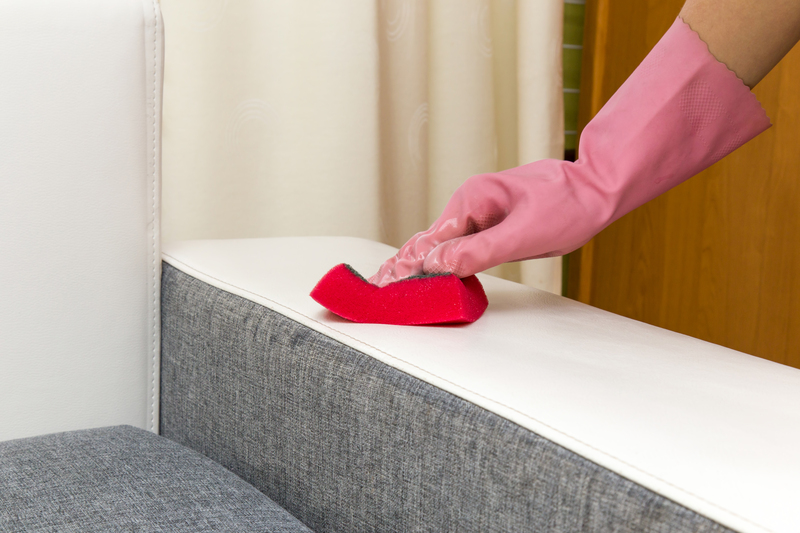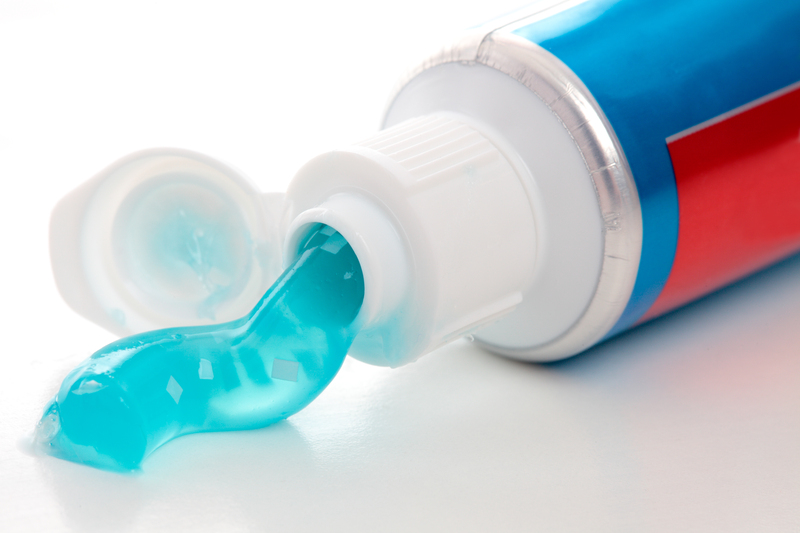Tips for Effectively Cleaning Mould from Window Sills
Posted on 04/09/2025
Tips for Effectively Cleaning Mould from Window Sills
Mould is a common nuisance in many homes, especially on window sills where condensation forms and creates a perfect breeding ground for spores. Not only is mould on window sills unsightly, but it can also impact your health and indoor air quality. If you've noticed black, green, or even white spots forming around your windows, it's important to act swiftly. In this comprehensive guide, you'll discover effective tips for cleaning mould from window sills and preventing its return, ensuring a healthier and brighter home.
Understanding Mould Growth on Window Sills
Before diving into cleaning techniques, it helps to understand why mould develops on window sills. Moisture from condensation, poor ventilation, and organic debris are all core contributors. Window sills provide a convenient surface for spores to settle and thrive, particularly in cooler months when windows are often closed.
- Condensation: Warm indoor air meets cold glass, generating water droplets.
- Poor Ventilation: Limited air movement leads to higher humidity.
- Organic Build-up: Dust, dirt, and organic particles serve as food sources for mould.
Regardless of the cause, regular cleaning and prevention are the keys to keeping mould at bay.

Essential Supplies for Mould Removal
Before you get started, gather the necessary supplies for a thorough clean. These tools and products make the job more efficient and protect both your health and your window materials.
- Protective gloves
- Face mask (N95 or similar)
- Soft-bristled brush or old toothbrush
- Microfiber or disposable cloths
- Spray bottle
- White vinegar or hydrogen peroxide
- Baking soda
- Mild detergent
- Bucket of warm water
Warning: If the area of mould is extensive (over 1 square metre), or if you have persistent issues, consider consulting a professional mould remediation specialist.
Step-by-Step Guide to Cleaning Mould from Window Sills
1. Ensure Safety First
Always prioritize safety when removing mould from window sills. Mould spores can cause allergies and respiratory issues, so wear gloves and a mask to avoid direct contact or inhalation.
2. Ventilate the Area
Open windows or use fans to increase air circulation while you clean. This will help disperse any mould spores released during the process and reduce exposure.
3. Remove Excess Moisture
Using a dry cloth or paper towel, blot away any standing water or droplets from the window sill. This minimizes further spreading and prepares the surface for cleaning.
4. Prepare a Cleaning Solution
There are several effective mould cleaning agents for window sills. Naturally derived solutions are preferred, as they're safe for most surfaces and minimize toxic fumes. Here are some tried-and-tested options:
- White vinegar: Fill a spray bottle with undiluted white vinegar. Vinegar is acidic and kills up to 82% of mould species.
- Hydrogen peroxide (3%): Pour directly into a spray bottle. This helps disinfect and bleach out stains.
- Baking soda solution: Mix one teaspoon baking soda per cup of water and shake well.
- Mild detergent and water: For simple cleaning tasks, a drop of dish soap in warm water may suffice.
5. Apply the Solution Generously
- Spray or dampen the affected area thoroughly.
- Let it sit for at least 10-15 minutes to break down mould structure and stains.
6. Scrub the Mould Away
Using your soft-bristled brush or an old toothbrush, gently scrub the window sill in a circular motion. Focus on corners and crevices. Don't scrub too hard--especially if you have wooden or painted sills--to avoid surface damage.
7. Wipe Clean and Rinse
- Use a clean microfiber cloth dampened with water to wipe away loosened mould and cleaner residue.
- Repeat the cleaning and rinsing process if necessary, especially for stubborn stains.
Once clean, pat the window sill dry with a fresh towel.
8. Disinfect and Dry
- For added protection, mist the area again with vinegar or hydrogen peroxide, then allow it to air dry.
- Do not rinse this final step, as it helps inhibit regrowth.
9. Disposal
Dispose of used cloths and cleaning materials in a sealed plastic bag, especially if you're dealing with significant mould growth. This prevents accidental spreading of spores.
10. Fix Persistent Moisture Problems
Addressing the root cause is crucial for long-term mould control. Check the window's caulking, seals, and nearby walls for leaks or water ingress. Using a dehumidifier or improving ventilation can make a big difference in moisture-prone rooms.
Preventing Mould from Returning to Window Sills
Once the sills are sparkling clean, the next step is to ensure mould doesn't reappear. Prevention is the most effective long-term strategy.
Keep Window Sills Dry
- Wipe down window sills and panes regularly, especially after rain or during humid periods.
- Address condensation immediately to deny mould the moisture it needs.
Increase Air Circulation
- Open windows daily to allow airflow when weather permits.
- Use fans or a dehumidifier in chronically damp rooms like bathrooms or kitchens.
Use Mould-Resistant Solutions
- Apply a thin coat of mould-resistant paint or sealant to cleaned sills.
- Choose anti-microbial cleaning sprays for regular maintenance.
Maintain Cleanliness and Monitor Regularly
- Vacuum and dust window sills regularly to remove organic particles.
- Inspect weekly during wetter months for early signs of regrowth.
Repair and Upgrade Windows
- Replace weather-damaged or rotting window frames and sills.
- Upgrade to double-glazing or more efficient window systems to minimize condensation.
Eco-Friendly Mould Removal Tips for Window Sills
Seeking a green alternative? Natural cleaners are often just as effective as harsh chemicals and safer for children, pets, and sensitive surfaces.
- Essential oils: Tea tree oil and grapefruit seed extract have anti-fungal properties. Add 10 drops to a cup of water, spray, and allow to dry.
- Lemon juice: Lemon's acidity and fresh scent can help clean light mould on otherwise clean surfaces.
- Baking soda paste: Mix baking soda with a few drops of water for a gentle scrubbing paste.
These options not only eliminate mould but also leave your home smelling clean and fresh.
Common Mistakes to Avoid When Cleaning Mould Off Window Sills
- Skipping protective gear: Never clean visible mould with bare hands or without a mask. Exposure can trigger allergies or respiratory symptoms.
- Using bleach on porous surfaces: While bleach kills surface mould, it doesn't penetrate wood or porous materials, allowing mould to return.
- Ignoring the source of moisture: Failing to address condensation or leaks leads to repeated growth.
- Mixing cleaning agents: Combining chemicals, especially bleach and ammonia, releases toxic fumes.
- Not drying surfaces: Leaving water on sills after cleaning encourages mould to regrow.

Frequently Asked Questions About Cleaning Mould from Window Sills
Is it safe to use bleach to clean mould on window sills?
Bleach is effective on hard, non-porous surfaces. However, it does not work as well on wood or painted surfaces and can damage some finishes. Opt for vinegar or hydrogen peroxide instead.
How often should I check my window sills for mould?
Inspect sills once a week during the wet season or if your home is prone to humidity. Early detection makes cleaning simple and prevents larger infestations.
Can mould on window sills make you sick?
Yes, mould releases spores that can trigger allergies, asthma, or other respiratory issues, especially among sensitive individuals. Always address mould promptly.
Conclusion: Protect Your Home with Proactive Mould Cleaning
Keeping your window sills clean and mould-free is vital for home maintenance and your family's health. By following the proven tips for effectively removing mould from window sills outlined in this article, you can tackle small problems before they become serious hazards. Remember, simple steps like frequent cleaning, moisture control, and using the right cleaning agents go a long way toward a healthier, brighter living space.
If you're dealing with persistent or widespread mould, contact a professional to ensure your home remains safe. With regular care and the right approach, your window sills can stay spotless and inviting all year round.





